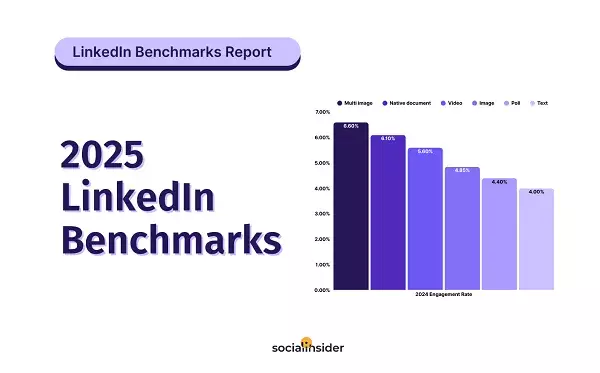LinkedIn has increasingly cemented its place as the paramount platform for professional networking, especially in light of recent upheavals at other social media giants like Twitter/X. This transition brings about new challenges and opportunities for brands aiming for visibility in an ever-competitive digital world. With companies recalibrating their social media strategies, the importance of understanding LinkedIn’s unique dynamics cannot be overstated.
Engagement levels are reportedly on the rise across the platform, prompting brands to delve deeper into content strategies that can enhance their presence and outreach. A wealth of recent insights from analytics firm Socialinsider reveals critical trends that signify which types of content are capturing user attention most effectively. With findings derived from an analysis of a million posts across 9,000 company pages, these insights provide a treasure trove of information for businesses seeking to amplify their LinkedIn strategies.
Content That Captivates: The Power of Visual Storytelling
At the forefront of Socialinsider’s analysis is the notable performance of carousel posts, which emerge as the most engaging format on LinkedIn. Carousel posts allow companies to share a series of images or slides in a single post, encouraging users to swipe through content. This format not only enhances engagement but also allows for a richer storytelling opportunity, making complex information more digestible and visually appealing.
In contrast, video content, while still vital, presents a nuanced story. According to LinkedIn’s internal data, videos yield 1.4 times more engagement compared to other post types. However, the contradiction between LinkedIn’s general statistics and Socialinsider’s company page-focused insights sparks an intriguing conversation. It raises the question: Does the context of content—whether personal or corporate—significantly affect user engagement metrics?
The Engagement Hierarchy: What Works Best?
The emerging consensus from multiple studies hints at a multi-faceted engagement hierarchy where carousel posts and video formats lead the charge, followed closely by document attachments. Furthermore, polls appear to be driving considerable impressions, highlighting how interactive content can keep audiences engaged and foster a two-way communication channel.
Yet, the secret to a successful LinkedIn strategy goes beyond mere post types; it is deeply tied to understanding your audience and aligning content with their interests and aspirations. Brands must invest time in analyzing their own engagement data and tailoring their content to meet the expectations of their followers. As Socialinsider points out, merely employing popular formats will not guarantee success unless the content is finely tuned to resonate with viewers’ interests and professional needs.
Follower Growth and Posting Patterns: Trends to Watch
An intriguing dimension of this data analysis reveals that smaller company pages have been experiencing significant growth in followers. This suggests that the content being shared—often more personalized or niche—strikes a chord with a burgeoning segment of users who may feel alienated by larger corporations. It brings to light a critical insight: sometimes, less is more. It’s not simply the volume of content but its qualitative essence that determines engagement and connection.
In addition, the rise in image and link posts, juxtaposed with the platform’s changes in post visibility, underscores a tactical shift in content dissemination strategies. As the link previews for organic posts become less visually appealing, companies have begun reverting to image-centric posts, cleverly placing links in their comments instead. It’s a fascinating adaptation to the whims of platform algorithms that can dictate visibility and engagement.
A Call to Action: Embrace Flexibility and Innovation
Ultimately, the landscape of LinkedIn engagement is not static; it is an evolving tapestry that requires brands to stay agile and innovative. The findings from Socialinsider should incite brands to explore varied content formats while continually assessing their effectiveness against audience responses. This is not merely about keeping up with trends; it is about pioneering unique content strategies that position brands as leaders in their sectors.
Strategically leveraging data can empower organizations to create content that is not only eye-catching but also profitable in terms of brand growth and audience interaction. As companies rethink their use of LinkedIn, actionable insights and creativity are imperative for cultivating a loyal, engaged following in this vital professional network.


Leave a Reply